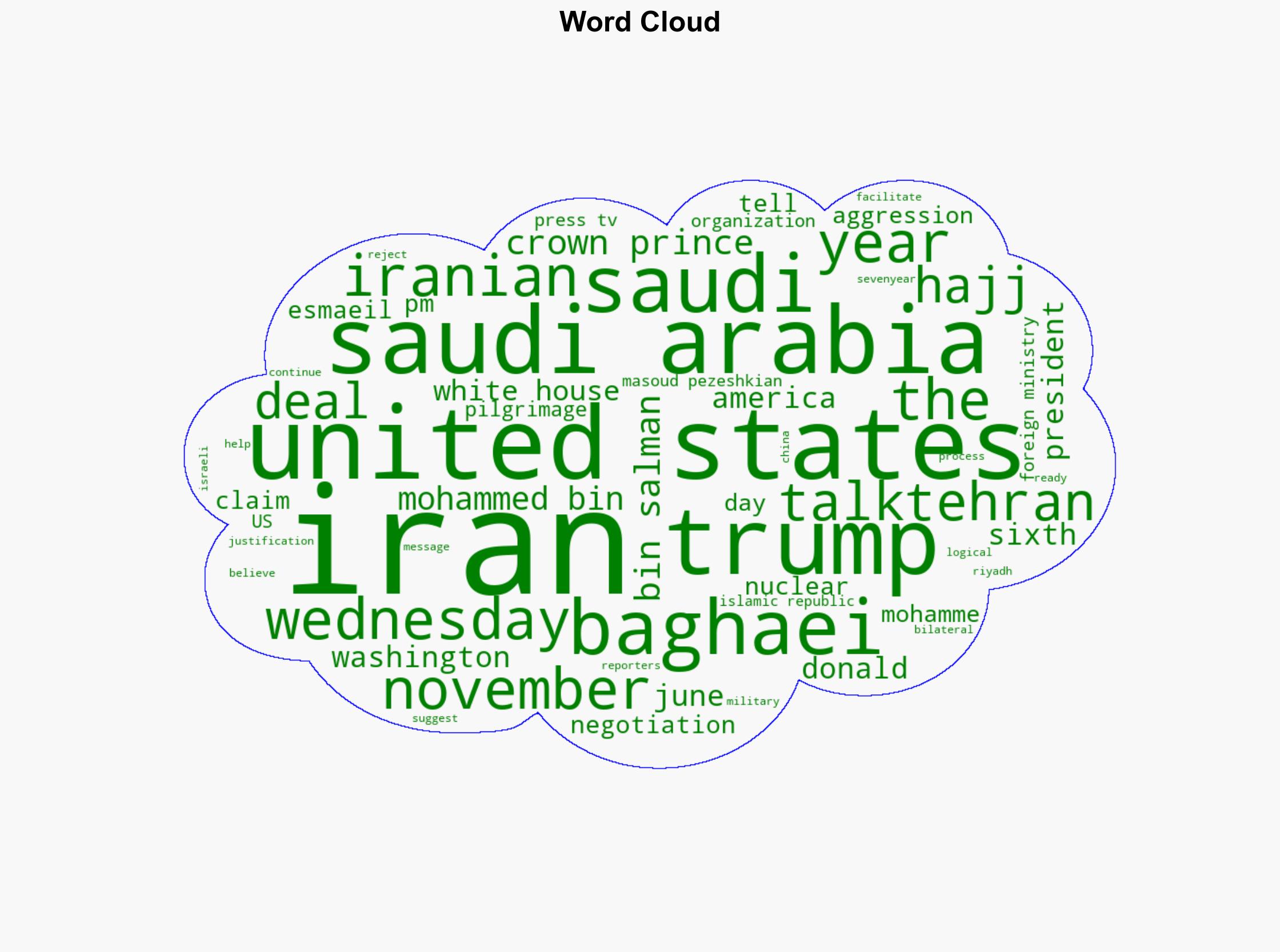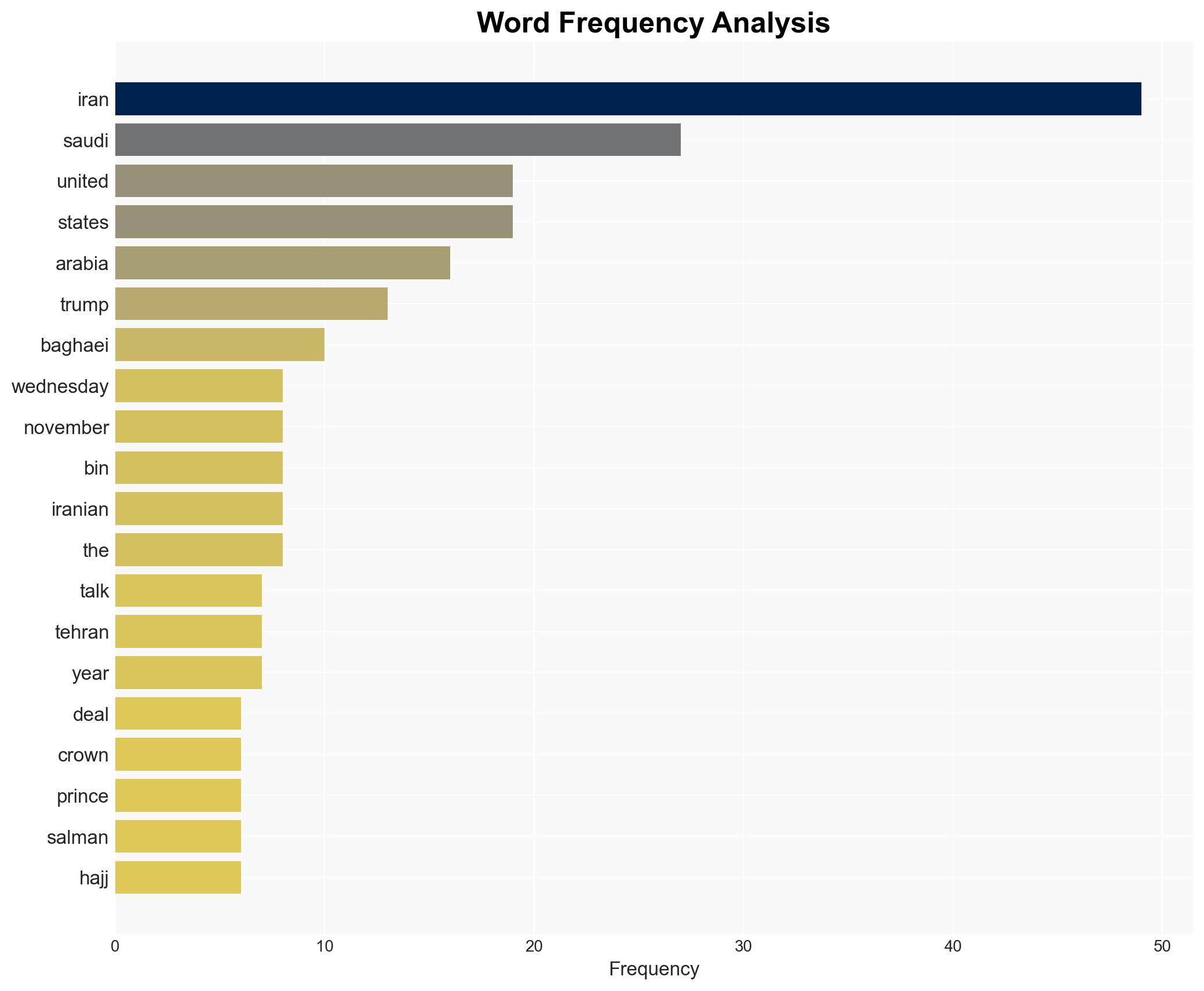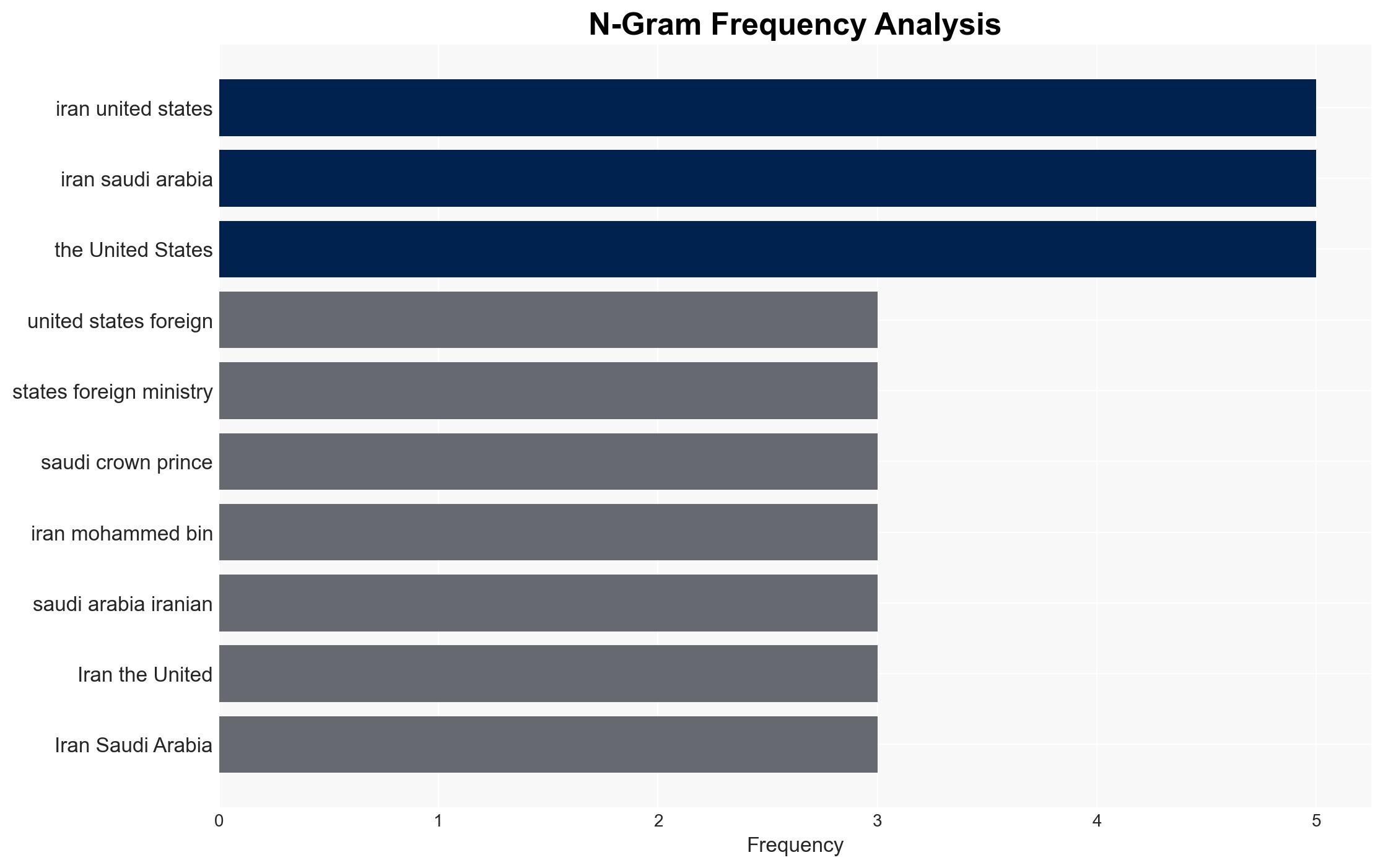‘No logical justification’ Iran rejects Trump’s claim of nuclear talks – Globalsecurity.org
Published on: 2025-11-20
AI-powered OSINT brief from verified open sources. Automated NLP signal extraction with human verification. See our Methodology and Why WorldWideWatchers.
Intelligence Report:
1. BLUF (Bottom Line Up Front)
Given the current geopolitical context and available evidence, it is assessed with moderate confidence that Iran is not engaged in nuclear negotiations with the United States, despite claims by former President Trump. The most supported hypothesis is that Iran maintains its stance of not negotiating under current U.S. pressure tactics. Strategic recommendations include continued monitoring of regional diplomatic interactions and preparing for potential shifts in Iran’s negotiation posture.
2. Competing Hypotheses
Hypothesis 1: Iran is not engaged in nuclear negotiations with the United States, as it perceives U.S. pressure tactics as illogical and counterproductive.
Hypothesis 2: Iran is secretly engaging in preliminary talks with the United States, possibly facilitated by Saudi Arabia, but publicly denies it to maintain a strong negotiating position.
Hypothesis 1 is more likely due to consistent public statements from Iranian officials rejecting negotiations under current conditions and the absence of concrete evidence supporting ongoing talks. Hypothesis 2 is less supported but cannot be entirely dismissed due to potential diplomatic backchannels.
3. Key Assumptions and Red Flags
Assumptions: Iran’s public statements reflect its actual diplomatic stance. Saudi Arabia’s involvement is limited to bilateral relations with Iran.
Red Flags: The possibility of miscommunication or strategic deception by either party. The potential for Saudi Arabia to act as a covert intermediary.
4. Implications and Strategic Risks
Failure to engage in talks could escalate regional tensions, potentially leading to increased military posturing or cyber operations. Economic sanctions may continue to strain Iran’s economy, affecting regional stability. Information warfare could be employed by both sides to influence public perception and diplomatic leverage.
5. Recommendations and Outlook
- Monitor diplomatic communications between Iran, the U.S., and Saudi Arabia for signs of negotiation shifts.
- Encourage multilateral dialogue involving regional stakeholders to reduce tensions.
- Best Case: Iran and the U.S. engage in constructive dialogue, leading to a new agreement.
- Worst Case: Escalation of military tensions and economic sanctions, destabilizing the region.
- Most Likely: Continued stalemate with sporadic diplomatic overtures but no substantive progress.
6. Key Individuals and Entities
Esmaeil Baghaei – Iran Foreign Ministry Spokesman
Donald Trump – Former U.S. President
Mohammed bin Salman – Saudi Crown Prince
Masoud Pezeshkian – Iranian President
7. Thematic Tags
Regional Focus, Middle East, Nuclear Negotiations, U.S.-Iran Relations, Saudi Diplomacy
Structured Analytic Techniques Applied
- Causal Layered Analysis (CLA): Analyze events across surface happenings, systems, worldviews, and myths.
- Cross-Impact Simulation: Model ripple effects across neighboring states, conflicts, or economic dependencies.
- Scenario Generation: Explore divergent futures under varying assumptions to identify plausible paths.
Explore more:
Regional Focus Briefs ·
Daily Summary ·
Support us





